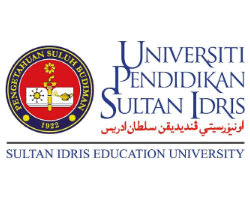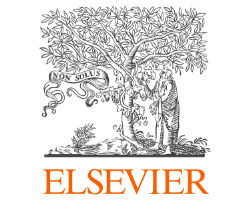Bayesian Network Approach in Educational Application Development: A Systematic Literature Review and Bibliometric Meta-Analysis
Abstract
Technological developments have brought about a paradigm shift in the world of education. The education system must be more open and flexible, where students can experience these opportunities according to their skill level. 21st-century education and the application of the elements of Revolution 4.0 Industry in education realize that initiative. The Bayesian Network approach is becoming one of the essential tools in the development of educational applications. Therefore, the persistence of this systematic review is to identify peer-reviewed literature on the Bayesian network approach in education. Scopus and Web of Science, and IEEE citation databases are used in the data-gathering phase. PRISMA approach and keyword search were obtained and analyzed. This bibliographic data of articles published in the journals over ten years were extracted. VOS viewer was used to analyzing the data contained in all journals and articles. This systematic review shows that the development in education can absorb the changes that occur in technology. The findings from 1160 articles extracted show that using the Bayesian approach in the development of educational applications improves the quality of use, especially from the point of students. The level of predictive accuracy generated through the Bayesian network approach improves the quality of educational application development. However, the study's findings indicate that there is scope for research related to the application and use of this approach in the development of educational applications.
Downloads
References
N. R. Mansor, R. Zakaria, R. Abd. Rashid, R. Mohd Arifin, B. Hairiel Abd Rahim, R. Zakaria, and M. T. Mohd, “A Review Survey on the Use Computer Animation,” in Education IOP Conference Series: Materials Science and Engineering, 2020. doi: 10.1088/1757-899X/917/1/012021.
F. T. Leow and M. Neo, “Interactive Multimedia Learning: Innovating Classroom Education in A Malaysian University,” Turkish Online Journal of Educational Technology, vol. 13, no. 2, pp. 99–110, 2014.
N. A. F. Saipullah, and M. I. Hamzah, “Tahap Penggunaan Multimedia Dalam Pengajaran Bidang Al-Quran: Satu Kajian Rintis Terhadap Guru Pendidikan Islam Di Sarawak. Persidangan Antarabangsa Sains Sosial Dan Kemanusiaan Ke-5 (PASAK5 2020), 5(November),” Journal of Quran Sunnah Education and Special Needs, vol. 5, pp. 223–233, 2020.
Sugandi and Yahdin, “Aplikasi Pengambilan Keputusan Pada Perencanaan Produksi Berdasarkan Teorema Bayes,” Media Informatika, vol. 1, no. 2, pp. 25-38, 2008.
Bustami, “Penerapan Algoritma Naive Bayes Untuk Mengklasifikasi Data Nasabah Asuransi,” Jurnal Informatika, vol. 8, no. 1, pp. 884-898, 2014.
Manning, Raghavan and Schutze, Introduction to Information Retrieval. Cambridge University Press: USA, 2009.
S. Afzal, R. Maciejewski, Y. Jang, N. Elmqvist and D. S. Ebert, "Spatial text visualization using automatic typographic maps." in Transactions on Visualization & Computer Graphics, vol. 18, no. 12, pp. 2556-2564, 2012, IEEE.
X. Zou, and W. L. Yue, “A Bayesian Network Approach To Causation Analysis of Road Accidents Using Netica,” Journal of Advanced Transportation, 2017.
O. H. Choon and Kumarenthiran, “A Bayesian Network Approach To Identify Factors Affecting Learning of Additional Mathematics,” Jurnal Pendidikan Malaysia, vol. 40, no. 2, pp. 185-192, 2015.
M. F. Adiwisastra and N. C. Basjaruddin, “Intelligent Tutoring System Untuk Mengukur Kemampuan Kognitif Dalam Fisika Dasar Berbasis Metode Bayesian Network,” Indonesian Journal on Computer and Information Technology, vol. 2, no. 2, pp. 40-47, 2017.
D. Moher, L. Shamseer and M. Clarke, “Preferred Reporting Items for Systematic Review and Meta-Analysis Protocols (PRISMA-P) Statement,” Systematic reviews, vol. 4, no. 1, pp. 1-17, 2015.
A. Liberati, D. G. Altman, and J. Tetzlaff, “The PRISMA Statement for Reporting Systematic Reviews and Meta-Analyses of Studies That Evaluate Health Care Interventions: Explanation and Elaboration,” Annals of Internal Medicine, vol. 15, no. 1, pp. 65-94, 2009.
E. U. Rodriguez-Barrios, R. A.l Melendez-Armenta, S. G. Garcia-Aburto, M. Lavoignet-Ruiz, L. C. Sandoval-Herazo, A. Molina-Navarro, and L. A. Morales-Rosales, "Bayesian Approach to Analyze Reading Comprehension: A Case Study in Elementary School Children in Mexico," Sustainability, vol. 13, no. 8, pp. 4285, 2021.
S. Li, “Bayesian Network Algorithms Used in the Assessment of Learners' Learning Behaviour,” International Journal of Continuing Engineering Education and Life Long Learning, vol. 3, no. 3, pp. 12-22, 2021.
S. M. Kanti, S. Dutta, and J. I Laskar, “A hierarchical bayesian network model for flood resilience quantification of housing infrastructure systems, “ASCE-ASME Journal of Risk and Uncertainty in Engineering Systems, Part A: Civil Engineering, vol. 7, no. 1, 2021.

























